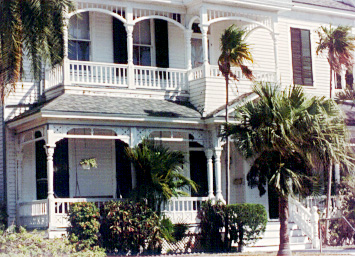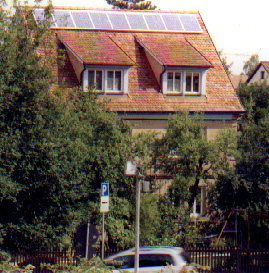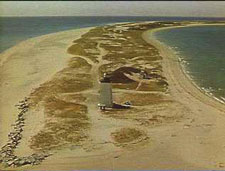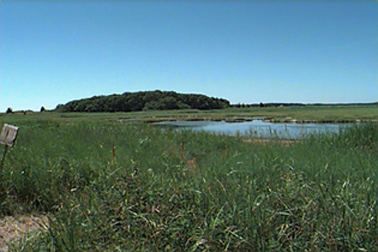
What | Who | How | When | Details

Islands in the Stream is a course on coastal conservation and development concerning current national commitments to protecting people and their natural resources. The seashore is a magnet for development. More than half the nation lives within one hour of the coast and among the fastest growing parts of the country are ocean front communities. Worldwide over half the planet lives in coastal areas, precisely where 60 percent of the ocean fishery resources spawn or spend part of their life cycle.
We study the sea’s barrier islands because they are the world’s vulnerable edge, requiring preservation, conservation and development. The class combines drawing, visual thinking, writing and verbal activities to assess your ideas with respect to community design for coastal settings.
Divided into four parts merging science, geography, policy and ecological design the course explores better ways to live beside the ocean through redesigning vulnerable barrier islands. By understanding the limitations of physical space, the constraints of biological communities and the necessity of assuring human health, participants in designing safer communities on barrier islands are confronted with a need to learn how to balance both seashore biology and ocean physics with social and economic necessities.
Participants have three field opportunities to see first hand
preserves and population pressures on nearby natural coastal areas during September or October
and, in November, attend a coastal retreat. All trips are optional
but may afford class members a chance to compare and contrast temperate and
tropical coasts in Florida. Active learners may become acquainted with solving
environmental problems in a practical context of resolving existing resource
disputes by this blend of oceanography, marine ecology, coastal conservation
policy and ecological design.
A community engagement aspect of the class actively involves student participants with municipal staff and engineers to stabilize a dune system in nearby Brevard County. Hard hit by hurricanes and winter storms, the county's barrier island beaches are home to the densest marine turtle nesting areas in North America. Those able and interested participants, enrolled in the class can receive credit for working on this project with the instructor.
The goal of the course is to allow students to envision and plan a barrier island thereby demonstrating their skills and what they have learned by combining field experiences and substantive information from all of our texts.
Rachel Carson, The Edge of the Sea
Joseph Siry, Marshes of the Ocean Shore
Sim Van der Ryn, Ecological Design
Carl Safina, Song for the Blue Ocean
Siry, A Study Guide for Seaside projects (Website, On Line)
Reserve
| What must you do? | ||
| item. | what & when? | value in percentage of final grade |
| 1. | Attendance: participation in work and walk days, discussing the texts. | 10% |
| 2. | Drawings and interpretation: design due with descriptions and explanations. | 5% |
| 3. | Design Charette; house site, (9.8): neighborhoods, (10-11): topographic district, (11.1). –raised by site survey, plans and texts– essay. (7 week) 10.11 | 15% |
| 4. | Tests and Verbal reports on textbooks, every three weeks., 8.30, 9.22, 11.3 | 30% |
| 5. | Field experience portfolio, plans & revisions, report on questions. 10.24 | 20% |
| 6. | Revisions of plans due to community constraints, essay. 10.28 8th, - 12th weeks | 15% |
| 7. | Final, last week, revisions & of team plans from 11.30, finals week, & essay. | 5% |
| 8. | ||
Base all of your work on the texts, with clear references to other author’s
ideas.
Your work must be your own with credit given to others for the ideas you borrow from them, cited in appropriate notes and listing of sources. If you do not do so, you have committed a fraud, which is called plagiarism, which could cause your to fail the assignment.
I must approve any work as a group on any assignment two weeks ahead of the
due date. Regardless of the assignment, I judge all work on a person-by-person
basis, there are no group grades.
Groups will be composed of students who can work off campus on the Brevard dune
stabilization project and another group of students who adopt a campus project.
These teams review hands-on exercises and present criticisms of neighborhood
and district designs so that participants can revise those plans.
Grades: all assignments are graded with careful attention
to each of these criteria:
CLIFS
C • clarity, coherence, spelling, grammar, rational & logical consistency.
L • length & development of your presentations, arguments, ideas, concepts, or themes.
I • information from the class texts, library research, or interviews.
F • frequency of examples from the lectures, journal, notes & readings.
S • subject developed & discussed in a thesis, introduction, summaries,
& conclusion.
I reward your consulting with reference librarians, and TJs’ tutors, or peer writing consultants. Work that is late is severely penalized as unacceptable and a loss of 10% of the grade ensues.
Mondays, Wednesdays & Fridays
August
18 Participating in a community improvement project, course overview & comparing
goals.
20 Introductions, Power Point presentation. The Edge of the Sea pp. xiii- 38.
23 Hands-on exercise 1: Reading Maps of shores & coastal areas “A strange
and beautiful place.”
25 The Seashore as the critical edge and test of conservation & development.
27 The first beach walk; Satellite Beach, Brevard Coast. Judging sites for “The
dune project.”
30 Exam on Rachel Carson's The Edge of the Sea .
September
1 Rocky shores, The Edge of the Sea, pp. 39-124. Discuss these
pages in class.
3 Sand Beaches, The Edge of the Sea, pp. 125-190. Discuss these pages in class.
6 What is the role of a dune system in shoreline protection ?
answers from: (Ian McHarg, my web site & Olin reserve)
8 Coral Coast, The Edge of the Sea, pp. 191-248. Discuss these pages in class.
10 Submit House Plans, verbally describe three essential features. (Ecological
Design book) Schedule appointments with instructor, in lieu of class.
13 Verbal reports on food webs & habitats from The Edge of the Sea, pp.
249-270. Discuss in class.
15 Putting homes together in a group: submit Neighborhood plans.
17 Hands-on exercise 2: Reading the landscape & topography of shores &
coastal areas .
20 Marshes of the Ocean Shore, pp. 1-17, Discuss these pages in class.
22 Test on Marshes of the Ocean Shore.
24 Second Beach Walk: site analysis of dune restoration project. (On Campus:
Chapel Garden Restoration Project)
25 optional field trip, Brevard Seashores: comparative
study, 9 AM-3 PM.
October
1 Verbal reports on conflict in jurisdictions, give two contrasting
examples in a district, (Siry book)
3 Day off in lieu of work days, (2/25 & 3/25) .
March 4-12 Spring Break – no classes
13 A Design Charette: group (on Campus | off Campus teams) exercise: individual
neighborhood plans formed into a district.
15 Marshes of the Ocean Shore, pp. 18-82. Report verbally and include in your
written essay.
15 Item Two (page 1): essay: What is a Beach from three perspectives? A four
page essay drawn from lectures and texts on resolving disputed problems and
the Design Charette (3.13).
17 Hands-on exercise 3: Selecting & establishing a site for dune restoration.
20 Schedule appointments with instructor
22 “the relation of productivity to places and biological diversity”
Marshes pp. 83-133. Discuss these pages in class.
24 Third Beach Walk: working on site of dune restoration project, Satellite
Beach, Brevard County.
25 Beach work day option
27 Marshes of the Ocean Shore, pp. 134-156. Discuss these pages in class.
29 Marshes of the Ocean Shore, pp. 157-191. Discuss these pages in class.
31 Day off in lieu of work days, (2/25 & 3/25).
November
3 Test on Van der Ryn book, fill in and short answers about
the places and issues in Ecodesign
5 reports on a particular error in the formation of knowledge about seashores.
7 Fourth Beach Walk: working on site of dune restoration project: Satellite
Beach
8 Last Beach work day option
10 Ecological Design, pp. ix-32. Putting knowing & doing together: Discuss
these pages in class.
12 Schedule appointments with instructor to discuss drafts of Redesign submission
14 “Redesigning the way we live, work and play along the coastal edge.”
pp. 33-56. Resubmit Plans for homes, neighborhoods and topographical districts
with dune and shore information.
17 Ecological Design, pp. 57-145. What are the 5 rules of Ecological Design,
Quiz & discussion.
19 Redesign submission: House, Neighborhoods, & District plans put together
with the revisions based on earlier (4-14) suggested changes. Ecological Design,
pp. 146-159. Discuss these pages in class.
21-23 Florida Keys (Mangroves) [TBA] Marine Study Center: optional field trip
($175 / 2 days)
24 Field Portfolio due as critique of plans, elements identified for redesign
& refine resubmission.
26 Schedule appointments with instructor: Turn in Final Revisions of the Barrier
island Plan
28 Present your final designs for the entire barrier island to the class.
December
1 Present your final designs for the entire barrier island to
the class with how it was changed and why it is more effective now.
3 Last Day of Classes: reports on designs based on the texts, discussing these
pages in class: esp Design, pp. 160-172. Turn in Ending Essay on how best to
develop a barrier island.
6 Final Exam: Rehearsed, Verbal presentation based on your Ending Essay on
how best to develop a barrier island. Present a brief, practiced and text related,
five minute, verbal summary answering the question: What did you learn?
•---------------------------•--------------------------•--------------------------•
I am here to assist you to do excellent work in this class by correctly interpreting all the texts and writing well crafted and well argued essays. My office time is available to you to discuss assignments and redraft your essays. For every hour we spend in class, I recommend you spend, at least, three hours in studying to prepare for class to do well. Readings are due on the day assigned in the syllabus, before the class meets to discuss the meaning of those pages.
The challenge of the class for you will be to combine visual and written information
into a coherent defense of ecological design to repair existing damages to ecosystem
services due to bad designs with respect to transportation, homes, communities
and public services.
Explanations of the six assignments
and participation: percentage value for grades.
Attendance is participating actively, 10%
This is more than coming to class and taking notes, although notes on that day's
activities will gain you points. Participation, alertness and cooperation is
rewarded every week. By this I mean students are rewarded equally in terms of
your asking text based questions in class, reading my e-mails to the class,
checking the postings on the FoxLink home page and responding to questions directed
to you in class with the correct answers. You earn one-third of a percent every
day you attend class. A full ten days of the semester are activity days you
should not miss because the build to your final plans for developing and conserving
an island.
Drawings and interpretation: design due
with descriptions and explanations. 5%
House, (2 weeks): Neighborhood, (4 weeks): District, (6 weeks). Practice your
sketching during our hands-on exercises in the field. Drawings and interpretation:
design due with descriptions & explanations.
House 3rd week revised (2 pages, one page defense from the texts) designs of
a home. 2.8.
Neighborhood 4th week (2 pages, one page defense from the texts and field experiences)
place homes together, 2.15 and 2.17.
District 10th week (2 pages, one page defense) settle disputes, due 4.14. These
are essentially a pass/fail exercise that is revised for a grade during the
tenth week and again for the final oral presentation of how you planned to protect
the barrier island and its communities at the final exam. (see the next page)
Charette, a 4 page essay is a minimum. 3.17. Eighth week (post Fall Break), 3.13-17. 15%
At midterm we conduct a design Charette as a role playing exercise where individual homes and neighborhood plans are formed into a district based on discussion questions –raised by the projects, the project team's plans and texts. With a brief supporting summary (one minute) presented verbally to class incorporating all 3 books we have read: Carson, Siry & Van der Ryn.
You are assessed in this role play based in part on how you prepare an essay
on conflicts using examples from Edge of the Sea, Marshes of the Ocean shore,
Ecological Design, & Making Waves. May be a 5-7 page essays double-spaced
with notes on sources and bibliography. Use visuals to describe the character
of the participants in the conflict. Due 3.17.
Monthly tests with verbal reports on the
4 textbooks, every three weeks: 8.30, 9.22, 11.3, 30%
A field experience portfolio consisting of drawings, plan & brief essay on questions. 20%
This is a compilation of your work on three hands-on exercises conducted on sequential weeks based on a field experience, in either Brevard (Indian River lagoon habitats and dune stabilization project) done 9.22-23, 10.21-22, and 11.17-18, (Mangrove of the Tropical Shore, Study Guide), or an on campus project.
11.24
portfolio is due. These are essentially a record of your work on projects, revised
defense of the project based on critiques and the texts.
Redraw Barrier Island with Revisions of plans due to constraints, 3 page essay. 15%
Initial Project Plans are presented in a group meeting called a: Charette, (11-13-17) to determine what is added and what is deleted based on field experiences and the team’s needs. Every team makes suggestions to alter, amend, and improve existing development based on your presented physical, biological and social constraints, the three hands-on activities and fact findings. Incorporate constraints in these revisions, make corrections suggested by a series of presentations done on 11.14, and 11.19 when redrafts are presented based on suggestions by project teams and by the instructor.
Your final resubmission of the plans is due on the last week, 11.30.
Essay based on Barrier Island Plan Revisions 5%
On 11.30 there is the final essay on: How does ecological design enhance or impede
the development process and how does the development of barrier islands create
specific physical, biological and social consequences for coastal resources
given what we know about sea level rise, weather, water quality, fisheries,
geography and human needs? [5 pp. typed, minimum]
Final Exam is a practiced verbal summary
presenting the above essay’s findings (turned in on 11.30):
5%
(This final oral interpretation is based on the final essay –explained
on the previous page—On the last day of the class you turn in this essay
accompanied by the resubmission of your Barrier Island Plans. The revisions
of those plans are based on what you learn in the field, the class suggestions
from the design charette, and meetings with the instructor and my critiques.)
5.5 Final exam presentation: What did you
learn? (Five minute rehearsed verbal report).
All written work must have a list or sources and the pages cited. Improperly
cited essays or late assignments are severely penalized, but going to TJs, the
writing center, & Olin Library is rewarded. (Read more about grades and
evaluating your work on my web site.)
My Intentions in this course are for you to:
To practice both design and writing components of this course, for you to critically
think and reflect on all of the texts' contents as you write up summaries of
the chapters, verbally present chapter summaries, and defend your design choices,
based on material in all of the texts. Besides informal writing, formal writing
will require you to rewrite your papers.
Flow chart of expected work from you:
| What must you do? | |||
|
I
|
|||
|
Regular
Attendance |
II
|
||
|
|
Drawings & explanations
|
||
|
|
|||
|
III Design Charette Essay |
IV
|
||
 |
 |
3 Exams
|
|
 |
|||
 |
V
Field Portfolio of 3, hands-on activities |
 |
|
 |
VI
Revised, redrawing & redesigns explained |
 |
|
 |
VII
Final Essay & Verbal Presentation |
||
|
+
Concepts =
|
 |
||
Author’s roles:
Rachel Carson, use this book to create a biotic and socialy coherent island and seashore
habitat with appropriate creatures along the different types of shorelines
and in near shore waters.
Joseph Siry, use this text to identify conflicts, contested ground and competing
parties to see how conservation and development in coastal zones strains
the physical, biological and social constraints on island communities.
Van der Ryn, use this treatise to follow rules and test assumptions about
how we can reveal dumb designs to fully revise our plans for living along
the shore in order to create a better world.
Use reserve books as sources for data, examples of excellent case studies and facts about the worldwide need to refine, redevelop and re-envision our relationships with the sea and the shore.
![]()
This button below works as a navigational aid.
schedule | Research home | Atlas | site-map | Ecology | laws | reliable web sites | quick look
Science Index | Site Analysis | Population Index | Global Warming Index | Nature Index | Research sites | Genes
Terms | Glossary | Word webs | Basic vocabulary | Advanced Vocabulary | Antonyms | Synonyms | Etymology | Concepts
Writing | Interviews | Free Writing
August 22, 2006
by Joseph Siry